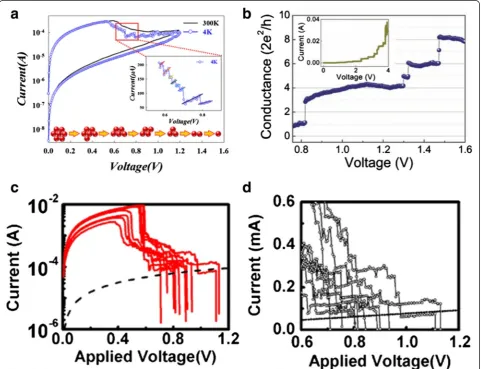Conductance Quantization in Resistive Random Access Memory
Full text
Figure




Related documents
The fungal strains investigated in the present paper ( Nigrospora sp. CBMAI 1328 and Arthopyrenia sp. CBMAI 1330) were isolated from the marine sponge Dragmacidon reticulatum
Second, injec- tion of TRIM21 with two antibodies against different re- gions of Ddx19B or Dicer1 caused target protein degradation and produced similar phenotypic defects
Controls with identical 3′UTRs displayed ubiquitous ex- pression in the hermaphrodite germline (Additional file 1: Figure S16C,D), verifying that the gld-1 promoter is per- missive
In this paper, to overcome the weaknesses of previous DEA models, KAM as a robust DEA model is used to evaluate the suppliers’ performance more accurate and is integrated with
In summary, our results strongly support the potential of PA as anti-angiogenic agent, with its multiple effects in inhibiting survival and proliferation of endothelial
Pandangan yang dikemukakan ini merupakan kecenderungan awal para Fuqaha’ dalam memahami konsep keuntungan dalam kontrak al-mudarabah, di samping wujud kecenderungan lain
Based on the results of these students’ achievements, the researchers are satisfied with the progress of the students. Table 11 shows the summarized results of the
of the present study was to synthesize and characterize the silver nanoparticles using aqueous leaf extract of Hamelia paten and screen for antibacterial
![Figure 9a [171] shows a commonly used sandwich RRAM](https://thumb-us.123doks.com/thumbv2/123dok_us/8858416.937570/7.595.57.290.89.339/figure-a-shows-commonly-used-sandwich-rram.webp)

![Fig. 5 Histogram showing typical conductance quantizationphenomenon [171]. The data are extracted from pulse stimuliresults of Ti/Ta2O5/Pt-structured memory cells](https://thumb-us.123doks.com/thumbv2/123dok_us/8858416.937570/9.595.60.541.537.674/histogram-showing-typical-conductance-quantizationphenomenon-extracted-stimuliresults-structured.webp)
![Fig. 10a [170]. Compared to the forming process, the](https://thumb-us.123doks.com/thumbv2/123dok_us/8858416.937570/10.595.59.541.401.644/fig-a-compared-forming-process.webp)
![Fig. 10b [179]. In other words, this kind of RRAM device](https://thumb-us.123doks.com/thumbv2/123dok_us/8858416.937570/11.595.61.537.328.675/fig-b-words-kind-rram-device.webp)
